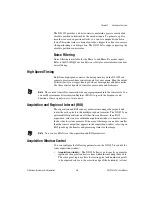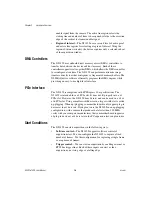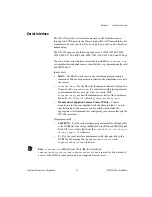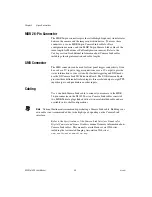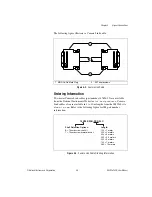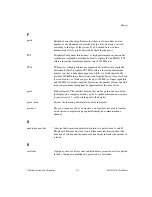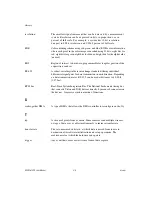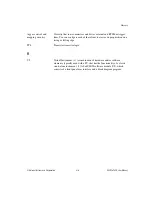
Chapter 2
Hardware Overview
©
National Instruments Corporation
2-3
Medium and Full configurations require using both connectors. These
configurations allow for more data throughput by offering multiple
synchronized data channels between the camera and the NI 1429.
Hardware Binarization
The NI 1429 supports binarization and inverse binarization. Binarization
and inverse binarization segment an image into two regions: a particle
region and a background region. Use binarization and inverse binarization
to isolate objects of interest in an image.
To separate objects under consideration from the background, select a pixel
value range. This pixel value range is known as the gray-level interval, or
the threshold interval. Binarization works by setting all image pixels that
fall within the threshold interval to the image white value and setting all
other image pixels to 0. Pixels inside the threshold interval are considered
part of the particle region. Pixels outside the threshold interval are
considered part of the background region.
Inverse binarization flips the assigned bit numbers of the particle region and
the background region. Thus, all pixels that belong in the threshold interval,
or the particle region, are set to 0, and all pixels outside the threshold
interval, or the background region, are set to the image white value.
The following figure illustrates binarization and inverse binarization.
Figure 2-2.
Binarization and Inverse Binarization
NORMAL
Stored V
alue
Sampled Data
INVERSE
Stored V
alue
Sampled Data

















